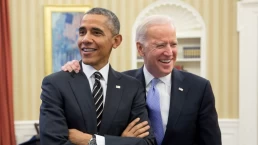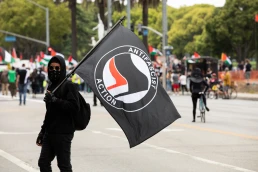Democrats’ right turn 30 years ago broke the party’s historic working-class base. As workers left the party, party leaders then treated those losses as an opportunity to pivot to the middle class.
By Neal Meyer, Left Notes
It’s hard to look away from the political storm wreaking havoc on this country. As someone who mostly thinks and writes about the left’s electoral strategy and our relationship to the Democratic Party, I’ve had a hard time writing about my usual subjects.
But last week, Catalyst published a long-form article of mine, “The Democrats Embrace Dealignment.” That’s as good a time as any to take a short break from the chaos and think about something somewhat removed. So here’s the capsule summary of the argument (though I hope you’ll check out the full piece over at Catalyst):
In the article, I take up and argue for Bernie’s pithy explanation for the Democrats’ 2024 drubbing. “It should come as no great surprise that a Democratic Party which has abandoned working class people would find that the working class has abandoned them.” I think he’s right on the money.

A lot has now been written about the extent of class dealignment, which is the shorthand label for the process of workers and center-left politicians drifting apart. My article focuses on explaining how class dealignment came about, and to do so I start by identifying its origin point in the 1990s. Up until the ’90s, Democrats could count on majority support from working-class voters in congressional elections, while Republicans depended on the middle class (see the figure below for what that looks like — more detail in the full piece). And although Democrats lost every presidential election between 1968 up until 1992 save one, which meant they lost a majority of voters from both classes, their presidential coalitions disproportionately relied on working-class support as well.
That historic coupling between working-class voters and the Democratic Party came undone because Democrats pursued a very different economic strategy under Bill Clinton than they had pursued before. Party leaders made austerity, free trade, and financial deregulation their version of “peace, land, and bread.” I go into some detail in the piece about why Democrats made this turn, but suffice it to say that the results weren’t pretty — especially since the party’s right turn came in the middle of deindustrialization and its free trade policy in particular became an easy target for critics. As I also show in the article, leading Democrats at the time, including many in the party’s economic policymaking circles, were fully aware of the negative consequences their program would have for the party’s working-class supporters. They pursued the program anyway.
Recent Posts
U.S. Military Willing To Attack “Designated Terrorist Organizations” Within America, General Says
December 19, 2025
Take Action Now “If I had no concerns and I was confident in the lawful order, I would definitely execute that order.”By Nick Turse, The……
DOJ Won’t Meet Friday Deadline To Release All The Epstein Files
December 19, 2025
Take Action Now The delay means the White House is in apparent conflict with a law President Donald Trump signed in November.By Gregory…
Privatize USPS? Mail Carriers Have A Better Idea
December 18, 2025
Take Action Now After battling for a fair contract, USPS workers face the threat of privatization, which they warn will harm all Americans.By Mel…
Senate Passes Massive $901 Billion National Defense Authorization Act, Sending It To Trump’s Desk
December 18, 2025
Take Action Now When combined with a supplemental bill passed earlier this year, the NDAA will bring the US military budget to over $1 trillionBy…




